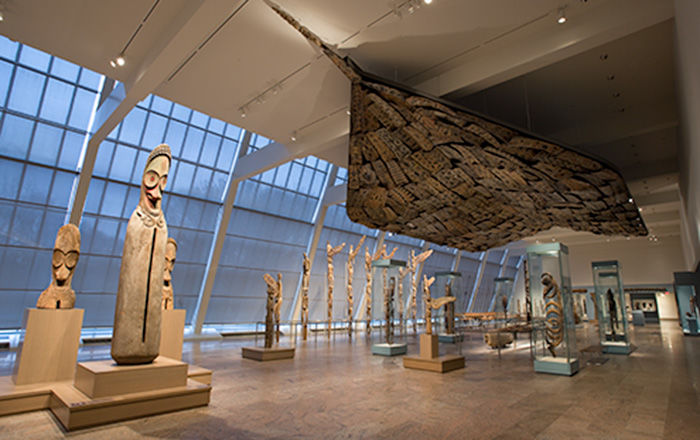Arkilla kunta (interior hanging)
Arkilla kunta are commissioned by a family for a daughter’s wedding. These elaborate textiles were woven by an all-male class of Fulani pastoralist weavers known as maabube (singular, maabo). A family would host a maabo within their domestic compound for the five to seven weeks required to weave such a majestic creation. Presented at the wedding, the resulting arkilla kunta is the most visible symbol of the marriage contract. Following the ceremony, it would be suspended over the edge of the marital bed. Arkilla kunta are typically made from five strips of woven fabric, sewn edge to edge. At some point after this example’s production, one of the strips was removed, resulting in a slightly narrower textile.
Textiles are an especially mobile and versatile form of visual expression. Fulani maabube (weavers) living in the western Sahel have created a range of woolen textiles that were traded widely within West Africa and beyond. Their elaborate works could exceed fourteen feet in length. These textiles served varying functions in the communities in which they were traded; some were used as blankets, while others could be suspended from the ceiling to separate and embellish architectural space. The Akan in present-day Ghana have been major consumers of these textiles, commonly referring to the various categories of woven wool as nsaa. Among this clientele, nsaa have taken on religious significance and are thought to delimit the sacred from the profane. The fabric became integral to dividing public areas from the space of a divine leader.
This image cannot be enlarged, viewed at full screen, or downloaded.
This artwork is meant to be viewed from right to left. Scroll left to view more.


